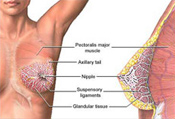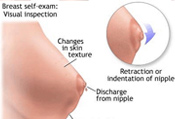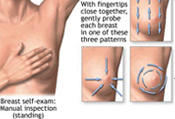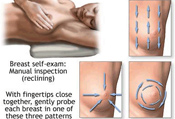
Prepare for Your Visit:
You will be pleasantly surprised at how quick, easy and comfortable a visit to one of our mobile digital mammography events can be. Our on-site mammography, ultrasound, and bone densitometry tests are much faster and convenient than a visit to a fixed-site facility, so you can be done and on your way in very little time.
Here, we will provide you with tips and information on how to prepare for your visit, so the experience can be as smooth and comfortable as possible.
How To Prepare
- Talk to your health care professional about any concerns you have regarding the need for the test you have scheduled, it's risks, how it will be performed, or what the results will mean to you.
- The day of your mammogram wear a two-piece outfit so that it is easy to undress above the waist.
- Please do not wear lotion, powder, perfume or deodorant to your appointment. Wearing these items can make mammograms more difficult to read and may corrupt equipment. If you must wear deodorant, moist towelettes will be available so you can remove it before your exam.
Self Examination
When breast cancer is detected early treatment is easier and more successful. For that reason, some experts recommend that women over 20 perform a monthly breast self exam to look for new lumps and other changes. The self exam does have limitations, however,and is not a substitute for regular breast examinations from your doctor and screening mammograms. If you do perform monthly exams, it's best to do them 3-5 days after your period ends, when your breasts are the least tender and lumpy.
Clicking the images below enlarges breast examination instruction images, and you can also read on for written breast exam information.
First, lie on your back. Place your right hand behind your head. With the middle fingers of your left hand, gently yet firmly press down using small motions to examine the entire right breast. Then, while sitting or standing, examine your armpit, an important area that is commonly overlooked. Breast tissue extends to this area, so it is important that it be included in every breast exam. Gently squeeze the nipple, checking for discharge. Repeat the process on the left breast.
Although some women find it easiest to do the exam in the shower when the skin is soft and wet, you are more likely to examine all of the breast tissue if you are lying down. Next, stand in front of a mirror with your arms by your side. Look at your breasts directly, as well as in the mirror. Search for changes in skin texture, such as dimpling, puckering, indentations, and skin with an "orange peel-like texture". Look for changes in shape, contour, and inversion of the nipples. Finally, perform the exam again, this time with your arms raised above your head.
Immediately discuss any changes you find with your doctor. Most women have some naturally occurring lumps in their breasts, but it's important that you become familiar with the way your breasts normally feel, so you can be aware of any new changes. Though the American Cancer Society considers self examinations to be optional, it's a good idea to talk to your health care provider about what is right for you.
References:
US Preventive Services Task Force, Screening for Breast Cancer Recommendations and Rationale
Guide to Clinical Preventive Services: Third Edition (2000-2003).
Rockville, Maryland US Department of Health and Human Services, Public Health Service, Agency for Health Care Policy and Research; 2002.
HQ Office:
AIWW HQ Office
7717 N. Hartman Lane
Tucson, AZ 85743
Phone: (520) 744-6121
Toll Free: (888) 233-6121
Fax: (520) 572-7138
WA Office:
AIWW WA Office
545 Andover Park W. Suite 109
Tukwila, WA 98188
Phone: (206) 467-1949
Toll Free: (888) 967-1949
Fax: (206) 467-1912
Scottsdale Office:
AIWW Scottsdale Breast Center
9180 E. Desert Cove Ave. Suite 105
Scottsdale, AZ 85260
Phone: (480) 614-5544
Toll Free: (888) 233-6121
Fax: (480) 614-5222
Social Media:
![]()
![]()
E. Tucson Office:
AIWW Desert Bloom Imaging
6452 E. Carondelet Dr.
Tucson, AZ 85710
Phone: (520) 744-6121
Toll Free: (888) 233-6121
Fax: (520) 572-7138
N.W. Tucson Office:
AIWW La Cholla Imaging
6261 N. La Cholla Suite D08
Tucson, AZ 85741
Phone: (520) 744-6121
Toll Free: (888) 233-6121
Fax: (520) 572-7138
Follow @twitterapi




